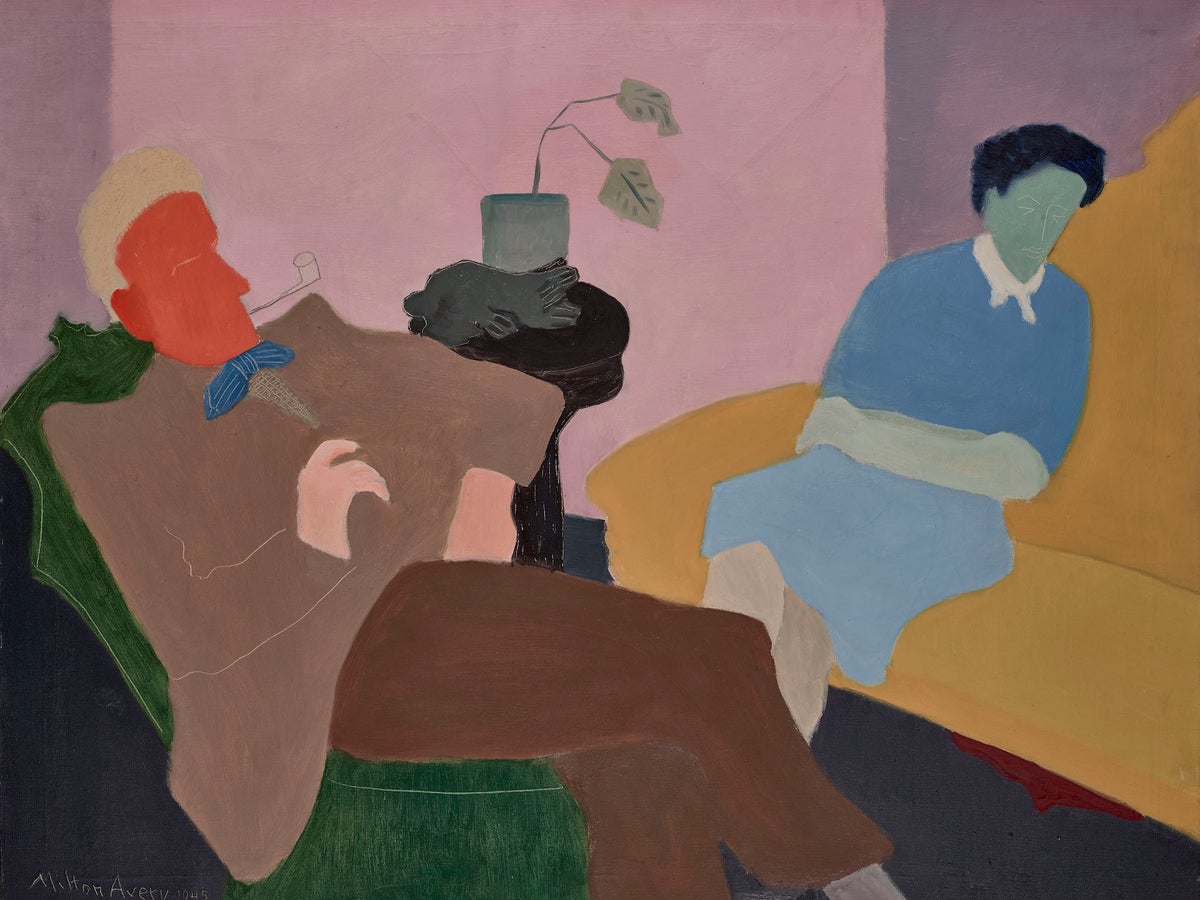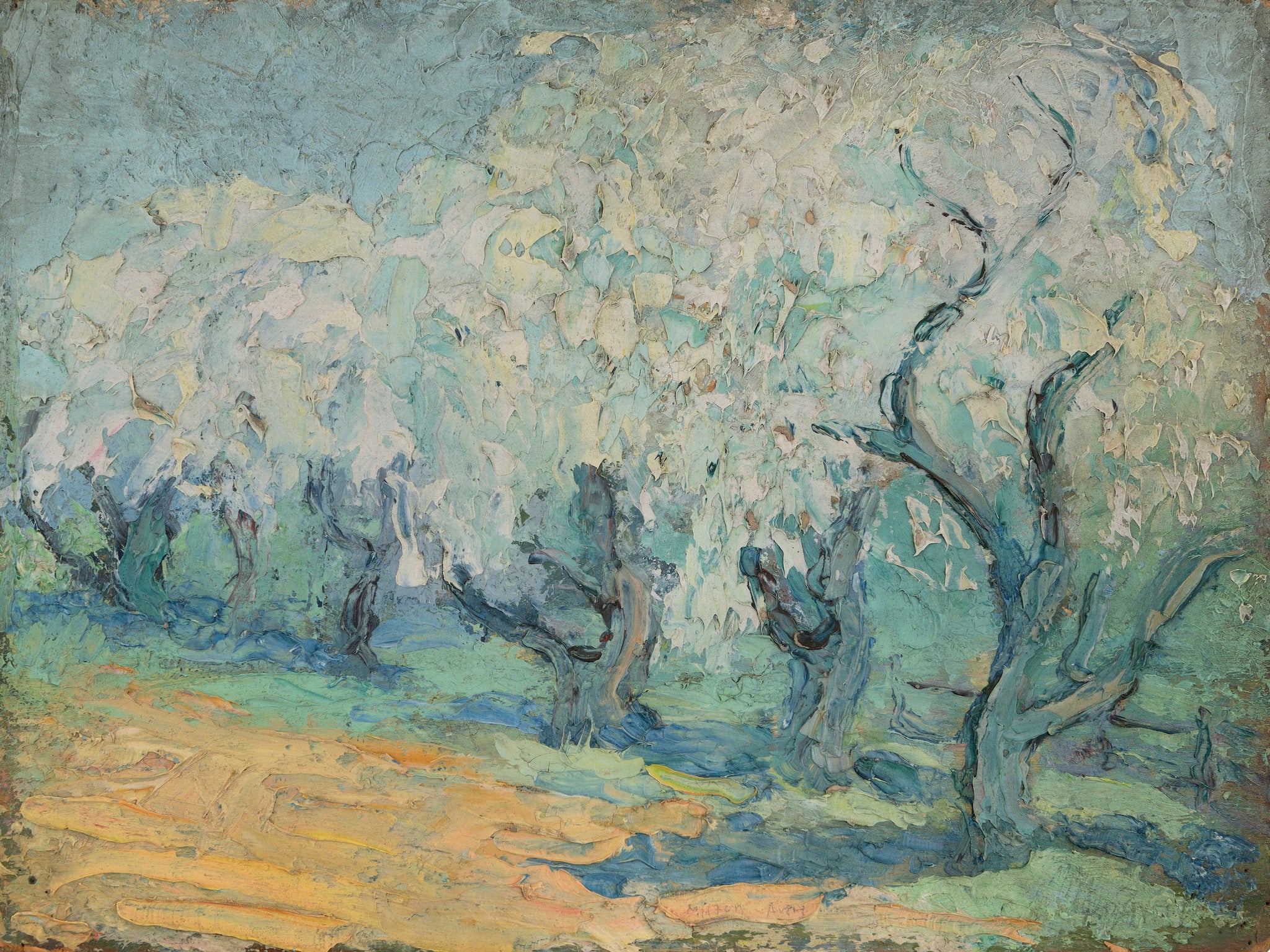
American art before Pollock and Warhol is murky territory for most of us, a blurry fug of provincial post-impressionism and dirty social realism over which the shadow of the great depression looms large. Grant Wood’s American Gothic is the one work from this era that just about everybody knows – bald farmer with pitchfork and wife in front of gothic-windowed barn – though it’s as much for the innumerable spoofs, by the likes of The Simpsons, as for the painting itself.
Milton Avery (1885-1965) stands out against this grim background as a notable American modernist. This substantial exhibition projects Avery as a great colourist, a pivotal influence on mega-names like Mark Rothko and Barnett Newman, who paved the way for the unstoppable rise of American art in the post-war era. Yet he was also, as the show itself concedes, something of a maverick; an artist who interacted with many important movements and moments, without becoming fully involved with any of them.
Avery’s background was far from privileged. Born into a working-class family in Connecticut, he left school at 15 to work in a factory. He took evening classes in letter-writing before becoming interested in first drawing, then painting. A series of small early landscapes show the obvious influence of European painters from Corot to Van Gogh, which he absorbed second-hand via imitative American impressionist painters such as Ernest Lawson. Yet there’s an assured touch to Avery’s feel for light and space, impressive in a semi-professional painter who was still working nights as an insurance clerk.
The earthy colours and faux-naïve forms of Moody Landscape (1930) and Ox and Cart, Gaspe (1938) bring to mind Christopher Wood, the English modernist who found his artistic identity in Cornwall. And Avery, like Wood and Britain’s other St Ives artists, felt most himself away from the hurly-burly; there are a lot of beach scenes in this exhibition.
Little Fox River (1942), one of the poster images for the exhibition, gives us an aerial view of a village on a beach surrounded by turbulent sea. It looks – at a glance – quite amateurish, with its squiggly waves and scratchy trees. Yet the recession of light and space towards the turbulent horizon is very skilfully captured. It’s a distinctively American piece of modernist landscape painting that still feels fresh 80 years on.
On his move to New York in 1925, however, Avery tackled the urban world head-on. Coney Island (1931), with its massed faces crowding the New York seaside resort, gives a truly hellish sense of the city on the beach. Yet while Avery became close friends with the younger Rothko, Newman and another key abstract expressionist Adolph Gottlieb, he remained slightly apart from the New York art scene, even when he was hosting its future luminaries at arty soirees around his kitchen table. In The Dessert (1939) he depicts the faces of the guests, all absorbed in one another, each of them treated in a slightly different way, from the masklike to the relatively realistic, as though to highlight the absurdity of the moment. Like most of Avery’s paintings, it doesn’t look quite like any other art you’ve seen.
In Self-Portrait (1941), Avery paints himself with red ears, skew-whiff thinning hair and angry-looking moustache, as the kind of all-American next-door neighbour character who’s forever busy with DIY in his garage – and that’s despite the schematised modernist composition. While the forms become flatter as his art progresses and the colour less realistic, a sense of human interaction, even drama, lingers.
Husband and Wife (1945) offers a beautifully harmonious arrangement of slightly sombre, washed-out colour: the affable, pipe-smoking husband’s face is coloured brilliant red, while the wife’s is a sour, acidic green. Behind the painting’s semi-abstract surface, there’s the sense of a row brewing; something you’d never get from Avery’s great inspiration Matisse.
Indeed, rather than imitate Matisse’s gracefully fluent lines, Avery lets his forms take their own often awkward course. If there are moments of slight clumsiness – I’m not crazy on Two Figures on a Beach (1950) – Avery’s art never feels overtly derivative the way so much modernism from the margins tends to. And at this point America was still very marginal in terms of art.
Yet in Seated Girl with Dog (1944) Avery created a genuinely ground-breaking American image, almost, it seems, by accident. The girl’s face, turned towards us, is reduced to a shield-like shape, divided into flat planes of red, where it faces the darkness, and palest pink towards the light. The disconcerting, anti-naturalist effect feels at once surreal and strangely prophetic of Pop Art.

The last room finds the elderly Avery holidaying annually in Cape Cod with Rothko and Gottlieb, under whose influence, the show argues, his work became increasingly abstract. Yet Avery never entirely departed from the figurative. In Boathouse by the Sea (1959), a diagonal line cuts across three broad bands of shimmering Rothkoesque colour, leaving the bottom half of the painting immersed in dense and ominous black. While the painting could in theory be seen as entirely abstract, it’s impossible not to read the black area as shadow, and the yellow beyond as sand, with a sea of pure blue beneath a glowing red sky.
While Avery is interacting here with some of the great artists of his time, he’s doing it entirely on his own terms. It’s that determination to go his own quirky way, while ignoring the bleakness of the times he lived through, that leaves Avery’s art feeling still fresh and essentially timeless. It makes this exhibition a joyous and enlivening experience.
Milton Avery: American Colourist, 15 July – 16 October 2022







